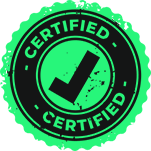
Using Yang's SEO copywriting services has completely transformed our online presence. The content wasn't just about improving rankings—it spoke directly to our audience. It connected emotionally with readers and aligned perfectly with our SEO goals. Thanks to the strategic copy, we've seen an increase in both traffic and inquiries about our developments. Highly recommended!

Costas Constructions

We were blown away by how Yang's team brought our complex service offerings to life through copywriting. The content crafted for our site was not only optimised for search engines but also engaging and easy for our audience to understand. Since updating our content, customer inquiries and overall engagement have increased significantly.

OCCOM

Yang's SEO copywriting services delivered the perfect mix of storytelling and strategy in both English and Chinese. The descriptions brought our teas to life, allowing us to connect with customers on an emotional level. The copy improved our online visibility while staying true to our brand, and we couldn’t be happier with the results.







